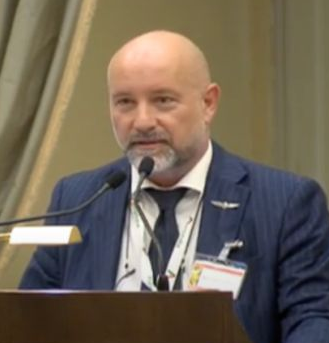
Cos'è l'airmanship
Pubblicato il 20 giugno 2025 da Antonio Chialastri
Il termine Airmanship indica una proprietà inerente alla professione del pilota che è difficilmente traducibile con una parola. Indica, infatti, l'insieme delle competenze che il pilota possiede per padroneggiare la complessità del fenomeno volo. Essa si articola in diverse conoscenze, che vanno dall'acquisizione di concetti legati all'aerodinamica, alla struttura dei motori, dal rispetto delle procedure operative alla conoscenza delle proprie responsabilità, dall'assimilazione dei concetti legati al fattore umano alla conoscenza dell'ambiente esterno. Essa include l'insieme delle conoscenze tecniche e di quelle non tecniche, come la leadership, la followership, la situation awareness, il decision making, la risoluzione dei conflitti, la critica, la comunicazione nelle sue varie sfaccettature.
L'illusione che Standard Operating Procedures e automazione sempre più spinta siano sufficienti a garantire la sicurezza sta rivelandosi negli ultimi anni quello che è: un'illusione.
Non esiste un aereo che oggi sia in grado di volare da solo con gli stessi livelli di sicurezza di un aereo pilotato da due professionisti. Ciò è dovuto al fatto che l'intelligenza artificiale, allo stato attuale, non è in grado di gestire la complessità che si sperimenta in un volo di routine in qualsiasi posto nel mondo.
Tutti i giorni, i piloti effettuano dei piccoli aggiustamenti nell'esecuzione delle procedure, per ottenere il fine, cioè poter atterrare in perfetta sicurezza a destinazione. Tuttavia, di questi aggiustamenti non rimane traccia. Semplicemente, il lavoro svolto e quello immaginato non coincidono e spesso, ma inconsapevolmente, i piloti colmano questo divario per ottenere il risultato finale.
La comprensione dei segnali anche deboli, l'anticipazione degli eventi, la mitigazione di deviazioni da ciò che è previsto, fa parte di una complessa e spesso inconsapevole conoscenza del sistema nel suo complesso, che quotidianamente viene messa in campo senza che all'esterno si sappia nulla.
Ad esempio, un avvicinamento su un aeroporto internazionale con presenza di maltempo è una situazione abbastanza routinaria. Non parliamo di risoluzione di emergenze o di applicazione di complesse procedure per avarie serie. Semplice routine, in cui due piloti sani e riposati stanno affrontando un avvicinamento con presenza di cumulinembi e/o vento forte. Anzitutto, occorre pianificare l'avvicinamento, scegliendo il tipo di tattica che consente all'equipaggio di evitare di entrare in un cumulonembo. Si tratta, cioè, di alterare una linea di azione prevista dal piano di volo depositato qualche ora prima. Scendiamo prima? Oppure aspettiamo il momento della discesa per sorvolare l'area di maltempo per poi incrementare il rateo di discesa? Evitiamo andando ad Est per evitare qualche fulmine oppure passiamo a Ovest che è sopravento e quindi evitiamo di subire la turbolenza? Il carburante che abbiamo a bordo ci consente di fare che cosa? Aspettiamo un miglioramento oppure iniziamo l'avvicinamento? E se andiamo all'atterraggio, cosa succede se dovessimo interrompere l'avvicinamento per vento oltre i limiti? L'aeroporto alternato è operativo? Ci sono altri aerei che stanno dirottando, con la possibilità di saturare i parcheggi e impedire l'accoglimento di altri aerei su quell'aeroporto? Abbiamo la possibilità di assistere i passeggeri con i nostri addetti di scalo che a terra possano fornire assistenza e istradarli con un pullman verso la destinazione originaria? I tempi massimi di servizio sono compatibili con il prosieguo del turno di volo? O dobbiamo avvisare la Compagnia di allertare un equipaggio di riserva per completare la serie di voli?
Altre mille domande potrebbero emergere in una situazione mediamente complicata. Figurarsi in una situazione di emergenza seria. Ecco, di tutto questo brainstorming non rimane nulla scritto. Non c'è traccia dei percorsi mentali che il pilota pone in essere per risolvere tutte le situazioni di volo. L'intelligenza artificiale necessita di questi modelli di ragionamento, che tuttavia non esistono in letteratura.
La caratteristica del personale navigante è che è per natura nomade e quindi parla, ma non scrive. Racconta le proprie esperienze davanti alla macchinetta del caffè, seduto a tavola durante una riunione conviviale. Se non ci sono estremi per compilare un ASR (Air Safety Report), tiene per sé ciò che ha vissuto senza condividerlo in pubblico.
Tale condizione ha fatto pensare agli enti regolatori che ciò che è previsto dalle norme è ciò che normalmente avviene a bordo. Relax: non è così. Parola di navigante.
In conclusione, un Comandante non può spiegare a chi non vola in poche parole cosa è l'airmanship. Esiste ciò che Michael Polanyi chiamava la “conoscenza tacita”, cioè l'insieme del non detto, del vissuto, che una comunità professionale condivide e che necessità due parole per essere condivisa. Ma solo all'interno di quella comunità.
